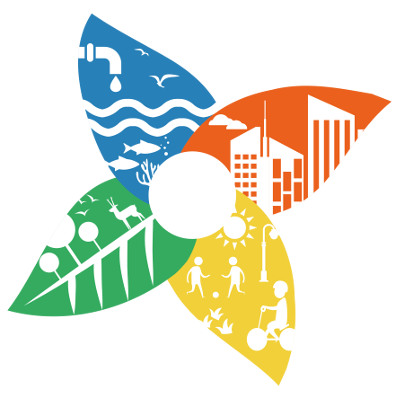I recently read Maria Kaika’s excellent book ‘City of flows: Modernity, Nature, and the City’ (see below for the full reference). For me two key arguments in the book really resonated with the work we are doing in NATURVATION on nature-based solutions.
Urban infrastructure should be understood a hybrid
Maria argues that the buildings, the roads, the energy and water networks and other aspects of urban infrastructure should be understood as hybrids. Or, in other words, combinations of natural resources with human labour and investment.
For example, the built environment consists of hybrid materials such as steel and cement, which are created through labour and investment deployed in the mining, transport and processing of natural resources (e.g. iron and sand).
From this perspective nature-based solutions can also be understood as hybrids. In fact a broad definition – using nature to address social, environmental and economic challenges – draws directly attention to the combination of nature and human endeavour in urban challenges!
The visibility of nature in urban infrastructure has shifted over time.
Secondly, within ‘City of Flows’ a great deal of evidence is presenting showing that the visibility of nature within the infrastructure of the modern, European city has shifted over the past two centuries. At first the infrastructure that brought natural resources into the city was highly visible and celebrated. Think water towers and natural gas holders, and social trips to see iconic feats of engineering such as the dams enabled the large scale and stable supply of water to major cities. Then as modern cities have developed these aspects of infrastructure have disappeared and/or have been hidden, literally and from public consciousness.
Had the term existed in the 1800s water and sewerage networks, which addressed challenges of meeting basic human needs, might have been considered (and widely celebrated) as nature-based solutions. This left me wondering about the extent to which we risk overlooking the nature-based solutions of the more distant past. Particularly in a project such as NATURVATION which adopts an innovation studies perspective, bringing a focus on novelty and the future of cities. It also gave me pause for thought about how the visibility of nature might change in the future and how the concept of nature-based solutions might be used to make the role of nature in the city more visible again.
Exploring these two initial lines of thinking further might play a supporting role in the development the conceptual framework for the NATURVATION project. Something that I am sure we will post more about as the framework develops over the course of this year.
Reference
Kaika, M. (2005). City of Flows : Modernity, Nature, and the City. Abington, UK: Routledge.
Chris Martin is a Research Associate at Durham University working on the NATURVATION project
